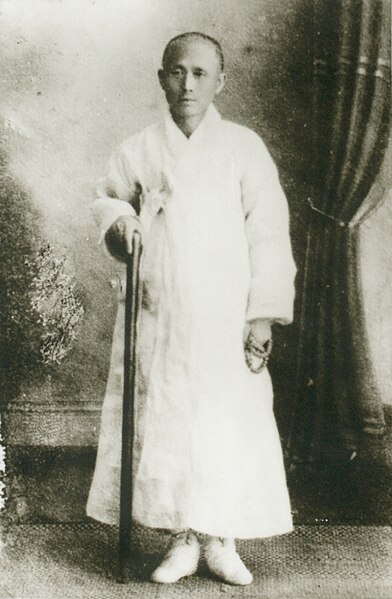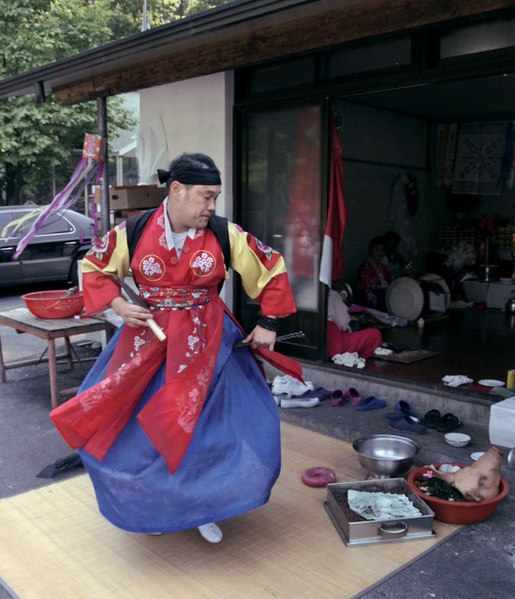Daejongism and Dangunism are the names of a number of religious movements within the framework of Korean shamanism, focused on the worship of Dangun. There are around seventeen of these groups, the main one of which was founded in Seoul in 1909 by Na Cheol (1864–1916).
Na Cheol, the founder of the religion.
Seo Il, the Daejonggyo priest who inspired the militant Korean Independence Movements and became president of the Northern Military Administration Office and the Korean Independence Corps.
Korean shamanism, also known as musok or Mu-ism, is a religion from Korea. Scholars of religion classify it as a folk religion and sometimes regard it as one facet of a broader Korean vernacular religion distinct from Buddhism, Daoism, and Confucianism. There is no central authority in control of musok, with much diversity of belief and practice evident among practitioners.
A mudang performing a kut ritual in Seoul, South Korea.
A paksu, or male mudang, performing a ritual in South Korea
Altar of a Sansingak, "Mountain God shrine". Mountain God shrines are often controlled by Buddhist temples. This one belongs to the Jeongsu Temple [ko] of Ganghwa Island.
Two jangseung outside a Korean village, photographed in 1903






